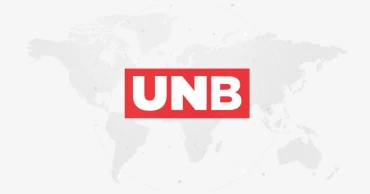diet
Diet, exercise combined best for tackling belly fat in kids: study
Australian researchers say the best way to reduce excess tummy fat in children is through a mix of healthy eating and regular physical activity.
Combining diet and exercise was significantly more effective at reducing central obesity than either approach alone, according to a study released on Saturday, which analysed data from 34 clinical trials involving over 8,100 children aged 5 to 18.
Central obesity, which refers to fat stored around the stomach and internal organs, is considered more dangerous than general obesity due to its link to heart disease, diabetes, and other long-term health issues, said the researchers from Charles Sturt University and Western Sydney University.
Standalone strategies like diet-only, exercise-only, supplements, or medication didn't show significant results in reducing waist size, said the study published in JAMA Network Open.
Your Water Bottle Says More Than Just "Stay Hydrated"
The most successful programs included Mediterranean-style or low-fat diets paired with up to 150 minutes of physical activity per week, lasting 6 to 9 months.
Experts say the findings highlight the urgent need for action as global rates of childhood obesity continue to rise, affecting an estimated 94 million girls and 65 million boys worldwide in 2022.
The researchers stress that coordinated efforts from governments, schools, and health organizations are needed to address the issue, and the results support global goals to end malnutrition and cut early deaths from noncommunicable diseases by 2030.
8 months ago
When should you eat? Before, after — or even while — exercising?
If you listen to some self-proclaimed exercise experts on social media, they swear that working out on an empty stomach burns more fat.
But it’s a common misconception that exercising in a fasted state improves performance or burns more calories, said Abby Langer, a dietitian in Toronto.
“The research shows that in terms of gains, it doesn’t really make much of a difference,” she said.
Does that mean you should load up on protein and carbs right before a workout? No, that’s not true either.
Here’s a look at when — and how — you should eat, before, after or even during a workout. (And remember, experts say what you eat is more important than when you eat.)
What’s the case for eating before exercising?
The calories in food literally are energy, so you need them to fuel your body for a proper workout. Eating too much too soon beforehand, though, can be problematic.
Exercising diverts blood from organs including the stomach to the muscles, said Langer, author of “Good Food, Bad Diet.” So exercising on a full stomach affects the digestive process, which could cause cramping or even make you feel sick.
That’s particularly the case with meals high in fat, protein or fiber, which take longer to digest than carbohydrates. Langer recommends eating a high ratio of carbs beforehand and waiting two to three hours before intense exercise.
Surprising health benefits of walking barefoot at home
“You don’t want to eat a big steak an hour before you play hockey,” she said.
If you exercise first thing in the morning or before dinner, it’s OK to have a carb-rich snack like a banana with peanut butter or yogurt with fruit beforehand. It will give you the energy to perform well, and you can fuel up afterward with a full meal.
When — and what — should you eat after exercise?
That steak may serve you better afterward because that’s when a higher ratio of protein is easier to digest, said Krista Austin, a physiologist in Colorado Springs.
Austin said if it will be an hour or longer before you can have a full meal, it’s better to have a high-protein snack in the meantime to help curb your appetite. The reason has little to do with muscle recovery or nutrient absorption: Rather, people who are too hungry make poor dietary choices.
“A lot of people get very hungry about an hour after exercise, and you don’t want to do that,” said Austin, author of “Performance Nutrition: Applying the Science of Nutrient Timing.” “You want to catch it early, or you go and overeat.”
But it’s another myth that you need to grab a protein shake within minutes of finishing to build the biggest muscles, Langer said.
Many exercise enthusiasts point to what’s known as an “anabolic window” of about an hour within exercising that the body is primed to repair muscle. For the average person, you have a much longer window, and nutrient timing is less important than making sure you consume some protein at every meal, Langer said. The body needs a continuous supply of amino acids like protein for muscle repair and maintenance, she said, which means about 25 to 30 grams at every meal, depending on various factors.
Ramadan 2025: Five tips for mental and emotional well-being while fasting
“Prioritizing that will help with goals, either muscle building, satiety, weight loss, all of that,” Langer said.
How about eating during exercise?
Most people who are eating enough throughout the day don’t need anything during a workout. Langer and Austin said the threshold is about an hour of intense exercise. Longer than that — say you're training for a marathon — and you can benefit from a carb-rich snack in the middle.
Instead of focusing on when to eat, Austin said to focus on what and how much. She cautioned against overcomplicating the topic and recommended following the USDA’s My Plate recommendations for a balanced diet.
“The biggest thing we need to teach people is that nutrition is simple,” she said. “Maybe you need to stop focusing on the concept of nutrient timing and just make sure that you’re consistently eating throughout the day and focus on health.”
9 months ago
Cerebral Haemorrhage: Signs, Reasons, Treatment, and Prevention
Cerebral haemorrhage is often referred to as intracerebral haemorrhage (ICH) or hemorrhagic stroke. It is a critical medical condition characterised by bleeding within the brain tissue. This condition requires immediate medical attention. This article delves into some basic knowledge about ICH to ensure proper diagnosis and treatment.
What is Cerebral Haemorrhage?
Cerebral haemorrhage or ICH, is a type of stroke that occurs when a blood vessel in the brain bursts and bleeds into the surrounding brain tissue. This bleeding disrupts the blood supply to the brain and damages brain cells.
According to research, cerebral haemorrhage is the second most common cause of stroke. Research also shows that ICH is the deadliest type of stroke, with a mortality rate of around 40%-50% within the first month.
Read more: Why are Suicide Rates Higher Among Men?
Types of Cerebral Haemorrhage
.
Intraparenchymal Haemorrhage
Intraparenchymal haemorrhage (IPH) is a type of bleeding that occurs within the brain tissue. According to Wikipedia, IPH is the most common type and accounts for around 8-13% of all strokes and can arise from various underlying conditions. IPH may lead to death or significant disability This is why it is an urgent medical situation requiring immediate attention.
Intraventricular Haemorrhage
Intraventricular haemorrhage (IVH) is caused by bleeding in the ventricles, which are fluid-filled cavities in the brain. These produce and circulate cerebrospinal fluid, a protective cushion for the brain and spinal cord. It can arise from physical trauma or as a result of a hemorrhagic stroke.
According to Wikipedia, around 30% of IVH cases are primary, while 70% are secondary. It has been observed that IVH occurs in approximately 35% of moderate to severe traumatic brain injuries. Consequently, IVH typically accompanies extensive associated damage, leading to unfavourable outcomes in most cases.
Read more: Reasons Why Ramadan Fasting is More Beneficial Than Dieting
What Causes Cerebral Haemorrhage
.
Head Trauma
Head injuries from accidents or falls can damage blood vessels in the brain. It may lead to brain haemorrhage in individuals under the age of 50.
High Blood Pressure
Untreated hypertension can weaken blood vessel walls. It increases the likelihood of a brain haemorrhage.
Aneurysm
Abnormal bulges in blood vessel walls are known as aneurysms, which occur when blood vessel walls weaken and swell. It potentially leads to a burst and subsequent brain bleeding and can result in a stroke.
Read more: Daily Strategies for Neuroplasticity: Enhancing Focus and Alleviating Anxiety
Blood Vessel Abnormalities
Arteriovenous malformations (AVMs) cause weakness in blood vessels in and around the brain, often only detected when symptoms arise.
Amyloid Angiopathy
This blood irregularity is typically seen in older adults with high blood pressure. It can lead to small unnoticed bleeds that may eventually result in a larger brain haemorrhage.
Blood Disorders
Conditions like haemophilia and sickle cell anaemia contribute to lower blood platelet levels and clotting. These increase the risk of brain bleeds.
Blood Thinner
While essential for some conditions, blood thinners can increase the risk of bleeding, including cerebral haemorrhage.
Read more: Good Stress: What Are the Benefits of Eustress?
Liver Disease
People with liver conditions have an elevated risk of bleeding issues, including brain haemorrhage.
Brain Tumours
Individuals with a history of brain tumours are at a heightened risk of developing cerebral haemorrhage.
Symptoms and Signs of ICH
Key symptoms of cerebral haemorrhage may include:
- Sudden and severe headache- Nausea and vomiting- Weakness or paralysis on one side of the body- Difficulty speaking or understanding speech- Vision problems- Loss of consciousness- Seizures- Dizziness- Loss of coordination- Difficulty balancing- Abnormal sense of taste- Difficulty swallowing- Difficulty writing or reading- Loss of fine motor skills.
Read more: Which Vitamins are Essential for Women?
How to Diagnose and Treat ICH
To diagnose a brain bleed, a healthcare provider conducts an immediate physical and neurological examination, alongside reviewing the patient's medical history and symptoms. Following this, they may order imaging tests such as a CT scan, MRI, or MRA to assess the location, extent, and potential cause of the bleeding.
Additional tests, including an electroencephalogram, chest X-ray, urinalysis, complete blood count (CBC), eye exam, lumbar puncture (spinal tap), or angiography, may also be utilised to detect underlying causes.
The treatment for a brain bleed varies depending on the severity and location of the bleed. Healthcare providers strive to halt the bleeding and tackle the root cause. Treatment options may encompass surgery and medication.
Prompt medical intervention can minimise brain damage, enhancing the prospects of recovery. Additionally, patients may receive supplemental oxygen through a ventilator, nutrients and fluids intravenously or via a feeding tube, and close monitoring in an intensive care unit to ensure stable vital signs.
Read more: How to Improve Focus by Training the ‘Attention Muscle’
1 year ago
How Does Fat Leave the Body When We Lose Weight?
Losing weight is a common goal for many, but have you ever wondered where the fat goes when you shed those kgs? This article will unveil the secrets of fat-burning and discover effective weight-loss strategies. Join the journey to a healthier you, where every lost kg tells a tale of determination and transformation.
What is Body Fat?
Body fat, often unappreciated, serves a crucial role as a reservoir of stored energy, particularly during extended periods without food access. Body fat refers to the adipose tissue present in the human body, serving as a crucial energy reserve and playing various physiological roles.
Comprising triglycerides, body fat is stored in adipocytes, or fat cells, distributed throughout the body. While essential for insulation, organ protection, and hormone regulation, an excess of body fat can lead to health issues.
Read more: 10 Delicious Quinoa Recipes for Weight Loss
The growth of fat cells in size and number is determined soon after birth and during adolescence. It remains relatively stable in adulthood unless disrupted by long-term excess calorie consumption. Weight loss can shrink fat cells but not their number.
Body fat is typically categorised into two types: essential fat and storage fat. Essential fat is vital for normal physiological functioning, found in organs, nerves, and cell membranes. Storage fat, on the other hand, accumulates beneath the skin (subcutaneous fat) and around organs (visceral fat), providing a reserve for energy needs.
Measuring body fat percentage is crucial for assessing overall health and fitness. Various methods, such as skinfold calipers, bioelectrical impedance, and dual-energy X-ray absorptiometry (DEXA), help estimate body fat content. Healthy body fat percentages differ based on age, sex, and fitness levels, with excessive body fat linked to increased risk of conditions like obesity, cardiovascular diseases, and diabetes.
Read more: How to Lose Weight without a Strict Diet or Heavy Exercise
Maintaining a balance between essential and storage fat is essential for overall well-being. It apexes the importance of a healthy lifestyle encompassing proper nutrition, regular exercise, and holistic health management.
1 year ago
Superfoods: Worth the Hype?
In recent years, the term "superfood" has garnered significant attention in health and wellness. These foods are often touted as nutritional powerhouses. They are praised for their exceptional health benefits.
The buzz around superfoods stems from their purported ability to provide a high concentration of nutrients, antioxidants, and other health-promoting compounds. Now, the questions arise, what exactly qualifies as a superfood, and is the hype surrounding the superfoods justified?
Are Superfoods Worth the Hype?
Superfoods are nutrient-rich foods often hailed for their exceptional health benefits. They typically contain high levels of vitamins, minerals, antioxidants, and other essential nutrients that contribute to overall well-being. Superfoods include blueberries, spinach, salmon, chia seeds, and kale.
The term “superfoods” was coined in the 1990s. But it became widely familiar in 2007 after being mentioned in an article in Time Magazine. While the term "superfood" might spark intrigue, it is essential to approach the concept with a critical eye.
Read more: Popular Winter Breakfasts in Bangladesh
Scientific evidence supporting the extraordinary health claims of superfoods varies. While some foods offer remarkable nutritional values, others might not live up to the exaggerated claims. Assessing the actual worth of superfoods involves understanding their nutritional content, benefits, and limitations.
Tips for Incorporating Superfoods into Your Diet
Seeds as Garnish
Seeds like chia seeds, pumpkin seeds, and hemp seeds have gained attention as superfoods due to their rich nutrient profiles. They are packed with proteins, healthy fats, fibre, vitamins, and minerals.
These tiny seeds work excellently as garnishes. Their subtle taste makes them perfect for enhancing the nutritional value of dishes and snacks without overpowering the flavours.
Dark Chocolate Desserts
Contrary to popular belief, dark chocolate is a nutrient-rich superfood. It is abundant in antioxidants and various essential nutrients. It is a versatile ingredient for desserts and can serve as a flavour enhancer.
Read more: 10 Bangladeshi Winter Street Foods: Taste Meets Tradition
For instance, you may have strawberries or banana slices dipped in dark chocolate for an antioxidant-rich dessert. It offers a delicious pre-workout snack or an evening dessert.
Nuts as Snacks
Nuts are another nutrient-dense superfood group. It delivers proteins and omega-3 fatty acids and is ideal for plant-based diets. They make for a satisfying and healthier snack option between meals and keep hunger at bay. Nuts serve as a convenient way to boost nutrition and resist unhealthy snacking both at work or home .
Cauliflower Rice
Cauliflower is a superfood due to its nutrient content like protein, vitamins, and minerals. But it is often overlooked. Cauliflower can replace potatoes and is excellent as an alternative to regular or brown rice. To prepare cauliflower rice first, boil the florets, then cool them. Now process them in a mixer. Your cauliflower rice is ready to be savoured.
Read more: 5 Tasty Savoury Winter Pitha Recipes for Bangladeshi Kitchen
Yoghourt Desserts
Yoghourt is a versatile and nutrient-packed superfood that serves as a savoury side or a base for desserts. Yoghourt can be paired with granola, dark chocolate, or naturally sweet berries. It creates effortless and nutritious dessert cups.
Berries Candy
Berries such as strawberries and blueberries make a healthy substitute for candies. You need to transform them into candy-like treats by squeezing lemon over the berries and refrigerating them for a few hours. This trick works with citrus fruits like oranges too.
Green Iced Tea
For a refreshing and nutritious drink, you may try iced green tea. It is packed with nutrients and is known to boost metabolism. Green tea infused with ice, lemon, and honey offers a superfood-packed beverage.
Read more: 5 Tasty Sushi Recipes for Bangladeshi Kitchen
Garlic Olive Oil
Both garlic and olive oil qualify as superfoods. They are rich in nutrients and known for their healing properties. Creating garlic-infused olive oil serves as a healthier alternative to butter for toast toppings. You need to simply combine olive oil with peeled garlic cloves and bake to prepare this delicious garlic olive oil.
2 years ago
Which Vitamins are Essential for Women?
Vitamins are integral for women's health. They actively maintain overall well-being, regulate vital bodily functions, and avert diverse health complications.
These nutrients play pivotal roles, supporting immunity, nurturing organs, and ensuring optimal functionality. Together they promote women's health and vitality.
6 Essential Vitamins for Women
Vitamin A
Vitamin A plays a critical role in women’s health. It actively supports vision, fortifies the immune system, and nurtures reproductive health. It is also essential for maintaining healthy skin. This vitamin is abundantly found in carrots, sweet potatoes, and spinach.
Actively incorporating these nutrient-rich foods into the diet ensures an adequate supply of Vitamin A. It actively fosters robust immunity, aids in cell regeneration for healthy skin, and contributes significantly to preserving optimal vision. Thus it helps ensure women’s overall well-being.
Read more: 10 Teas for Upset Stomach and Improved Digestive Health
Vitamin B12
Vitamin B12 stands as an indispensable element for women. It contributes to energy production, neurological functions, and red blood cell formation. Meats, fish, dairy products, and fortified cereals serve as rich sources and ensure a substantial intake of Vitamin B12.
This vitamin is vital for sustaining nerve health, supporting cognitive functions, and aiding the production of red blood cells crucial for oxygen transport. Its active presence in the diet is pivotal for women for fostering vitality, ensuring neurological well-being, and maintaining the body's essential functions.
Vitamin C
Vitamin C serves as a pivotal nutrient for women. It helps with collagen formation, bolsters immunity, and promotes skin health. It is abundantly found in citrus fruits, strawberries, bell peppers, and broccoli. Vitamin C plays a crucial role in maintaining overall well-being and enhancing immune responses.
Read more: Vitamin C: Where to Found and How Much to Consume
It also supports collagen synthesis, fortifies skin integrity, aids in wound healing, and safeguards against infections.
Vitamin D
Vitamin D stands as one of the most necessary nutrients for women. It is great for bone health, immunity function, and mood regulation. Exposure to sunlight and the consumption of fortified foods such as fatty fish, eggs, and fortified dairy products ensure adequate Vitamin D levels.
This vital nutrient plays a pivotal role in maintaining strong bones, supporting the immune system's resilience, and regulating mood patterns. It can help to prevent Vitamin D deficiency diseases like osteoporosis. Actively incorporating these sources into the diet and sunlight exposure actively facilitates optimal Vitamin D levels.
Read more: Different forms of Vitamin D: Benefits, sources of Vitamin D1 vs D2 vs D3
Vitamin E
Vitamin E serves as a potent antioxidant. It shields women's cells from damage. This vitamin is abundantly found in nuts, seeds, spinach, and avocados. Vitamin E stands as an essential nutrient for women's health.
Its role as an antioxidant actively safeguards cells from harmful free radicals, supports skin vitality, and counteracts oxidative stress. Including these nutrient-rich foods into the diet ensures an ample supply of Vitamin E. It also protects women's overall health, preserving cellular integrity, and fortifying against the detrimental effects of oxidative damage.
Vitamin K
Vitamin K stands as a significant nutrient for women. It assists in blood clotting, bone metabolism, and heart health. Foods such as spinach, broccoli are rich in Vitamin K. It plays a significant role in supporting bone health and blood clotting mechanisms.
Read more: Microwave Cooking: 7 Healthy Chicken Breast Recipes
By actively incorporating these Vitamin K-rich foods into the diet, women can ensure their safety from different Vitamin K deficiency issues. It also participates in blood coagulation, aids in wound healing, and supports optimal bone density. Its role in regulating calcium aids in bone metabolism, while also contributing to heart health. All together it plays a vital role in women's overall health.
Closing Lines
Maintaining a balanced intake of vital vitamins and minerals is crucial for women's health and well-being. Actively incorporating a diverse range of nutrient-rich foods aids in sustaining optimal health across life stages. This practice actively supports bodily functions, fostering resilience and promoting wellness in women.
Read more: Zinc: Health Benefits, Food Sources and Daily Requirements
2 years ago
Delicious Oatmeal Recipes for Weight Loss
Though Oatmeal is a breakfast staple often associated with simplicity and routine, it does not have to be bland and uninspiring. Are you finding the taste of regular oatmeal a bit mundane? Wondering how you can make it more palatable and enticing?
Fear not! There are countless ways to jazz up your oatmeal and turn it into a delicious and nutritious breakfast that can make your weight loss journey more enjoyable.
Benefits of Oatmeal
Oatmeal is a whole-grain cereal food packed with nutrients. It has many health benefits, including:
- High in fibre aids in digestion promotes a feeling of fullness and helps to lose weight.- Lowers cholesterol levels and contributes to a healthy heart.- Regulates blood sugar levels, especially beneficial for diabetics.- Packed with essential vitamins and minerals.- Aids in weight management and promotes a healthier lifestyle.
Read more: 10 Best Teas for Weight Loss
10 Best Oatmeal Recipes for Losing Weight
Oat Milk
Ingredients
½ cup whole rolled oats, 3 cups water, 2 teaspoons honey, ½ teaspoon vanilla extract, and ⅛ teaspoon sea salt.
Instructions
First, in a blender, mix oats, water, maple syrup, vanilla, and salt for 30 seconds. Then, strain the mixture through a fine mesh strainer into a large bowl for a smoother texture.
You may add honey for sweetening and enjoy it instantly. Or you can drink it after being chilled.
Read more: How to Lose Weight without a Strict Diet or Heavy Exercise
Oatmeal Bowl
Ingredients
5 tablespoons rolled oats, ⅓ - ½ cup hot water, 2 tablespoons walnuts (chopped), 1 cup blueberries, and 2 tablespoons honey.
2 years ago
Best Foods to Increase Platelets in Dengue Fever
Dengue fever, an illness transmitted by mosquitoes, is a viral infection that impacts a vast number of individuals every year across the globe. It is characterized by symptoms such as high fever, severe headache, joint and muscle pain, rash, and in some cases, a decrease in platelet count. Platelets, being vital components of the blood, play a crucial role in the process of coagulation, ensuring the prevention of excessive hemorrhaging. Dengue can lead to a decrease in platelet count. While medical intervention is crucial in severe cases, certain foods can support platelet production and aid in recovery.
Platelet Counts in Dengue
In dengue fever, the virus affects the production and function of platelets, which can lead to a condition known as thrombocytopenia. In a healthy body, the standard quantity of platelets in circulation within a microliter of blood falls within the range of 150,000 to 450,000 platelets. However, during dengue fever, the platelet count can drop significantly, putting individuals at risk of bleeding.
Platelet counts below 150,000 are considered low. And when the platelet count falls below 100,000 platelets per microliter of blood, it is considered a risk zone, and immediate medical attention is required. It is essential to monitor platelet levels regularly during dengue fever to ensure appropriate medical intervention if necessary.
Read more: Dengue Prevention: 10 Home Remedies to Repel Mosquitoes
Best Foods to Increase Platelets in Dengue Fever
Eating a well-balanced and nutritious diet is vital for supporting the immune system and aiding in the recovery from dengue fever. Here are some of the best foods that can help increase platelet counts during dengue fever.
Papaya
Papaya is rich in vitamin C, which plays a crucial role in boosting platelet production. It also contains enzymes like papain that help improve digestion. Consuming ripe papaya or drinking fresh papaya juice can be beneficial. In Bangladesh, papaya is readily available and can be included in the diet easily. Try to have 1-2 servings of papaya daily.
Pomegranate
Pomegranate is a powerhouse of antioxidants and essential nutrients. It can help stimulate the production of platelets and improve overall blood circulation. Including fresh pomegranate juice or adding pomegranate seeds to salads or yogurt can be a healthy choice. Attempt for 1-2 servings of pomegranate daily.
Read more: Exploring Dengue Diagnosis: The Essential Tests for Detecting the Virus
Leafy green vegetables
Leafy green vegetables such as spinach, broccoli, and fenugreek leaves are excellent sources of vitamins, minerals, and antioxidants. They help in increasing platelet counts and boosting overall immunity. These vegetables are commonly found in Bangladesh and can be incorporated into meals or consumed as salads. It would be better to have 2-3 servings of vegetables per day.
Beetroot
Beetroot is rich in iron and folic acid, which are essential for maintaining healthy blood and increasing platelet production. It also contains antioxidants that help in detoxification. Including beetroot in salads or consuming freshly extracted beetroot juice can be beneficial. You may consume 1-2 servings of beetroot daily.
2 years ago
How to Lose Weight without a Strict Diet or Heavy Exercise
Losing weight is a common goal for many individuals. Though the traditional methods of dieting and exercise help with losing weight, these may not be suitable for everyone. Fortunately, there are alternative approaches that can help one shed those extra kilos without following strict dietary restrictions or intense workout routines. It's important to recognise that weight loss is a personal journey, and what works for one person may not work for another. Let’s explore some effective strategies to lose weight without relying solely on diet or exercise.
11 Tips to Slim Down without Harsh Diet or Intense Exercise
Understanding Caloric Deficit
Regardless of the weight loss approach, achieving a caloric deficit is essential for losing weight. Caloric balance refers to the relationship between the calories one consumes and the calories one burns. To reduce weight without diet or exercise, one needs to focus on creating a calorie deficit through mindful eating and making healthier choices.
Incorporating Healthy Eating Habits
An individual can stay fit without following a strict diet plan. The secret is adopting healthy eating habits, which is also crucial for weight loss. To maintain a healthy diet, one should consume nutrient-rich foods like fruits, vegetables, lean proteins, and whole grains. Including a variety of colours on the regular food menu can ensure a good balance of vitamins and minerals. To prevent weight-gain, one should avoid or minimise the intake of processed foods, sugary beverages, and snacks high in saturated fats.
Read more: PCOS Diet: Foods to eat & avoid for ovarian cyst conditions
Mindful Eating
It is a key to weight loss. Embrace mindful eating to cultivate a positive connection with food. By slowing down, savouring each bite, and being attuned to the body's hunger and fullness signals, one can prevent overeating and establish a healthier relationship with what one eats.
For mindful eating, one needs to avoid distractions like smartphones or television; because technology and devices can lead to mindless eating.
Always Keep Healthy Snack
During work or after exercise one can feel hungry. Sometimes it can be challenging to have access to nutritious snacks and meals. Many tend to navigate to food apps and order fast foods, which may lead to gaining extra pounds besides harming health.
Depending on personal preference, one should carry some healthy snacks, such as nuts, beans, or a protein bar. These snacks can help to avoid the consumption of higher-calorie fast foods or restaurant meals.
Read more: Dietitians Warning: Who Should Avoid Red Meat?
Do Some Physical Activities
Even if one does not have time for exercising with fitness equipment, incorporating physical activities in everyday lifestyle can help shed weight.
One can engage in activities one enjoys, such as walking, jogging, swimming, dancing, or playing a sport. Furthermore, one should try to stay active throughout the day, like taking the stairs instead of the elevator or going for a short walk after meals.
2 years ago
7 Healthy Spinach Recipes To Try This Summer
Spinach is a nutritious diet that is packed with calories, protein, iron, vitamin C, vitamin E, potassium, and magnesium. It also contains fat, carbohydrates, fiber, sugar, calcium, vitamin A, iron, sodium, vitamin C, folate, and vitamin K. Spinach supports immune function and the digestive system. Furthermore, it has anticancer properties. Let’s take a look at some delicious Spinach recipes to beat the heat and improve immunity this summer.
7 Exclusive Spinach Recipes
Spinach & Potato Curry
Ingredients1/4 cup oil, 1 onion (chopped), 2 potatoes, 1 chili (green), 2.5 tsp salt, 1 tsp cumin seeds, 1 tsp coriander powder, 1 tsp red chili powder, 0.5 tsp turmeric, 1 tbsp garlic, 0.5 tbsp ginger (minced), 1 tomato, and 250g spinach.
InstructionsFirst, heat the oil in a pan and then fry the onions as long as they are brown in color. Now add the potatoes, green chili, ginger, garlic, and spices. Cook for 3 minutes. Then add 1/2 cup of water and chopped tomatoes and cook for 10 minutes. Next, add spinach and cook for another 5 minutes or until there isn't any water (murky-colored) left. Enjoy with roti or plain rice.
Read More: Top 10 Healthy Seeds to Eat
Creamed Spinach
Ingredients300 grams Spinach, 5 garlic cloves, 1/2 inch ginger sliced, 2 green chilies (chopped), 1/2 tsp cumin seeds, 1/4 tsp turmeric, 1/2 tsp garam masala, 2 tsp besan, 200 grams paneer (cut into cubes), 1 tbsp yogurt, 2 tsp heavy cream, 5 tsp oil, 1 tbsp ghee, and 1/2 tsp salt.
InstructionsFirst, cook the spinach with 10-12 cups of boiled water for 2 minutes and then put it in a strainer. Wash it with normal water, and let it drain.
Now to prepare the sauce, heat 2 tsp oil in a pan. Then add green chilies, garlic cloves (2 slices), ginger, and saute for about ½ minutes. Next, blend the spinach with toasted chilies, garlic, and ginger with ¼ cup of water to make a smooth paste. Keep the paste aside.
Then, add 3 tsp oil to the pan and cook the paneer cubes for 3-5 minutes on medium heat and set them aside.
Take a bowl and mix together some yogurt, besan, and salt, and set aside.
Add ghee to a pan and fry (cook) the cumin seeds. Add chopped garlic cloves, and turmeric powder and cook for about 30-40 seconds. Add the spinach paste and yogurt mixture and cook for about 5-7 minutes. You can add 3 tbsp water if required. Add garam masala, the fried paneer, and cook for another 2 minutes. Finally, add heavy cream and enjoy.
Read More: 5 Nontraditional Biryani Recipes
Spinach and Cheese Pasta
Ingredients250 g dry pasta, 2 tbsp olive oil, 1 tbsp butter, 1–2 cloves fresh garlic, 1 onion (minced), 3 cups spinach (chopped), 4 oz goat cheese (crumbled), 3 oz cheese (parmesan), salt and black pepper (as required).
InstructionsFirst, cook the pasta following the package directions. After 2 minutes add the spinach and stir continuously. Season with salt and pepper but don’t overcook. Drain and reserve ¼ cup of starchy pasta water.
Then heat the olive oil and butter, add the garlic and onion, and cook for about 2-3 minutes. Add the drained pasta, followed by spinach, goat, and parmesan cheese, and combine well. Add the reserved pasta water as much as needed to get a creamier sauce. Adjust salt and pepper and enjoy.
Read More: 8 Delectable Kabab Recipes for Bangladeshi Kitchen
2 years ago



















